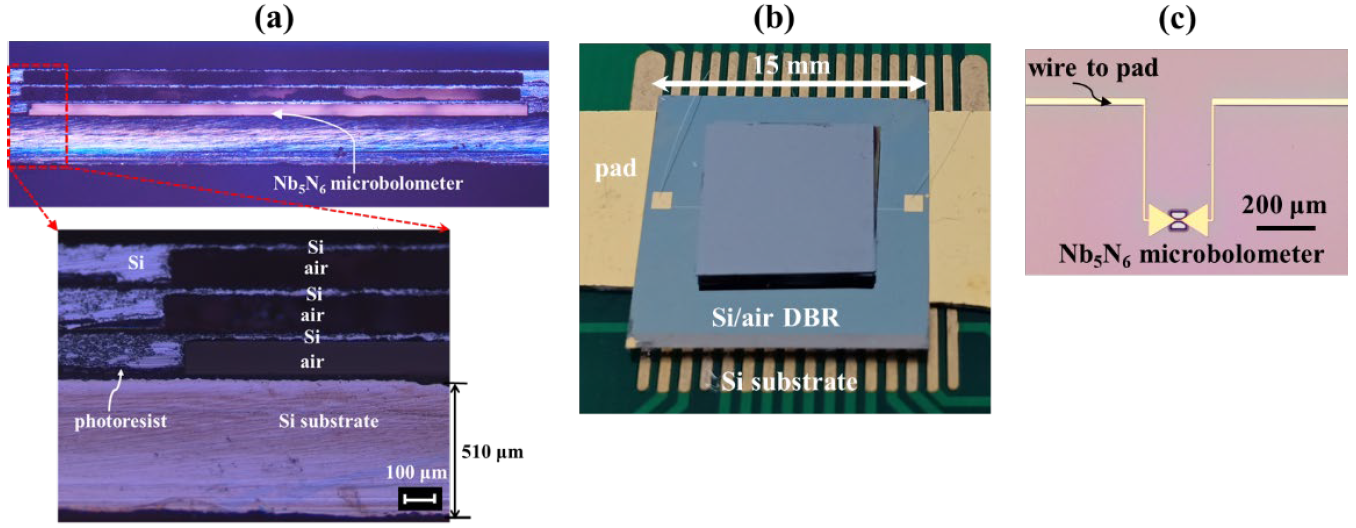| PREVIOUS PRESENTATION | BACK TO PROGRAM OVERVIEW | NEXT PRESENTATION |
Cavity-integrated terahertz detector
Xuecou Tu1,2,*, Yichen Zhang1, Shuyu Zhou1, Xu Yan1, Yunjie Rui1, Bingnan Yan1, Chen Zhang1, Ziyao Ye1, Hongkai Shi1, Runfeng Su1, Xiaoqing Jia1,2, Lin Kang1,2, Jian Chen1,2 and Peiheng Wu1,2
1Research Institute of Superconductor Electronics (RISE), Nanjing University, Nanjing, Jiangsu 210023, China
2Purple Mountain Laboratories, Nanjing, Jiangsu 211111, China
*tuxuecou@nju.edu.cn
Efficiently fabricating a cavity that can achieve strong interactions between terahertz waves and matter would allow researchers to exploit the intrinsic properties due to the long wavelength in the terahertz waveband. This paper presents a terahertz detector embedded in a Tamm cavity with an extremely narrow response bandwidth and an adjustable resonant frequency. A new record has been reached: a Q value of 1017 and a bandwidth of only 469 MHz for terahertz direct detection. The hybrid Tamm-cavity detector is formed by embedding a substrate with an Nb5N6 microbolometer detector between an Si/air distributed Bragg reflector (DBR) and a metal reflector. The hybrid Tamm cavity exhibits a higher quality factor than conventional pure Tamm cavity and also enables very strong light–matter interaction by the detector with an extremely confined photonic mode compared to a Fabry–Pérot (FP) resonator detector at terahertz frequencies. The resonant frequency can then be controlled by adjusting the thickness of the substrate layer. The detector and DBR are fabricated separately, and a large pixel-array detector can be realized by a very simple assembly process. This versatile cavity structure can be used as a platform for preparing high-performance terahertz devices and is a breakthrough in the study of the strong interactions between terahertz waves and matter.

Figure 1: (a) The scheme of a pure Tamm cavity with a 3-pair DBR. (b) Reflection spectrum of (a). The insets are the electrical distribution of leaky Tamm mode at 0.36 THz and Tamm mode at 0.65 THz.

Figure 2: (a) Side view of Si/air DBR layers assembled onto the detector chip after being bonded together with a photoresist. (b) Package for a hybrid Tamm-cavity detector on a printed circuit board. (c) Nb\sub>5N6 microbolometer terahertz detector.
References
[1] Jepsen, P. U., Cooke, D. G. & Koch, M. Terahertz spectroscopy and imaging—modern techniques and applications. Laser Photonics Rev. 5, 124–166 (2011)
[2] J. Dai, J. Zhang, W. Zhang, and D. Grischkowsky, Terahertz time-domain spectroscopy characterization of the far-infrared absorption and index of refraction of high-resistivity, float-zone silicon, J. Opt. Soc. Am. B 21, 1379 (2004)
